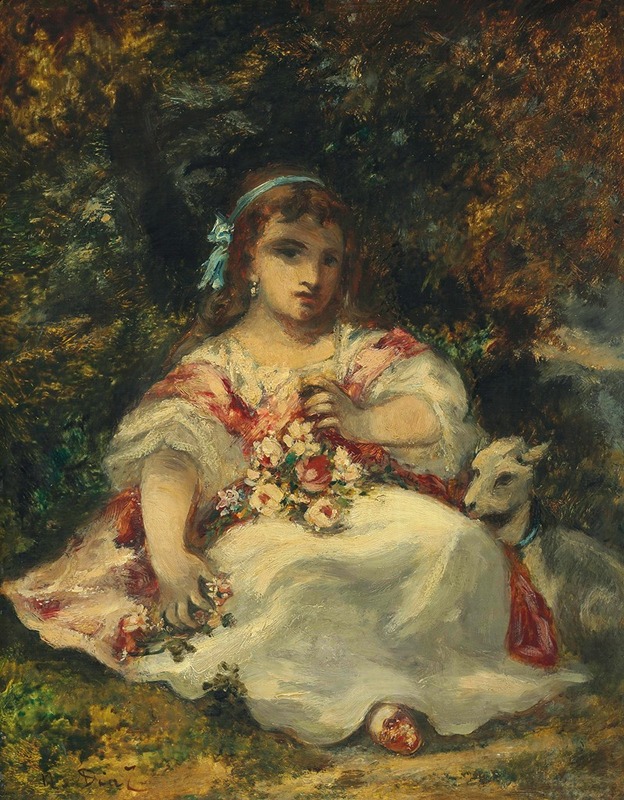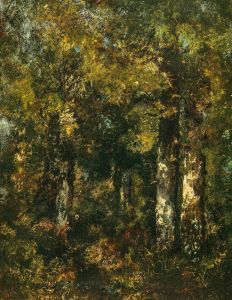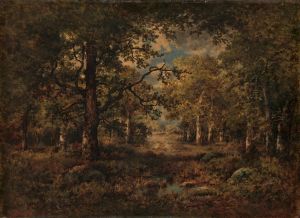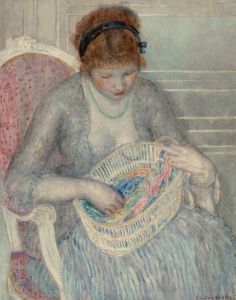
La fille de Diaz
A hand-painted replica of Narcisse-Virgile Diaz de La Peña’s masterpiece La fille de Diaz, meticulously crafted by professional artists to capture the true essence of the original. Each piece is created with museum-quality canvas and rare mineral pigments, carefully painted by experienced artists with delicate brushstrokes and rich, layered colors to perfectly recreate the texture of the original artwork. Unlike machine-printed reproductions, this hand-painted version brings the painting to life, infused with the artist’s emotions and skill in every stroke. Whether for personal collection or home decoration, it instantly elevates the artistic atmosphere of any space.
Narcisse-Virgile Diaz de la Peña was a prominent 19th-century French painter, known for his association with the Barbizon School, a movement that played a significant role in the development of landscape painting. While Diaz de la Peña is primarily celebrated for his landscapes, he also produced a number of figure paintings, one of which is "La fille de Diaz" (The Daughter of Diaz).
"La fille de Diaz" is a painting that reflects Diaz de la Peña's skill in capturing the human form and his ability to infuse his works with a sense of warmth and intimacy. Although specific details about the painting's creation, such as the exact year it was painted, are not widely documented, it is consistent with the style and thematic elements that characterized much of Diaz de la Peña's work during his career.
Diaz de la Peña was born in Bordeaux, France, in 1807, and he became an influential figure in the Barbizon School, which was named after the village of Barbizon near the Forest of Fontainebleau. This group of artists, including notable figures like Jean-François Millet and Théodore Rousseau, sought to break away from the formalism of academic art and instead focused on painting nature and rural life directly from observation. Diaz de la Peña, although somewhat less focused on pure landscapes compared to some of his peers, contributed significantly to the movement with his richly colored and often romanticized depictions of both landscapes and figures.
In "La fille de Diaz," the artist's use of color and light is particularly noteworthy. Diaz de la Peña was known for his vibrant palette and his ability to create a sense of atmosphere, often using warm tones to evoke a feeling of serenity and beauty. This painting likely showcases these characteristics, with a focus on the delicate rendering of the subject's features and the surrounding environment.
Diaz de la Peña's work was well-received during his lifetime, and he exhibited regularly at the Paris Salon, the official art exhibition of the Académie des Beaux-Arts in Paris. His ability to blend elements of Romanticism with a more naturalistic approach earned him a respected place in the art world of his time.
The Barbizon School, and Diaz de la Peña's contributions to it, played a crucial role in the transition from Romanticism to Realism in French art. By emphasizing the importance of painting en plein air (outdoors) and capturing the transient effects of light and atmosphere, artists like Diaz de la Peña paved the way for later movements, including Impressionism.
While "La fille de Diaz" may not be as widely recognized as some of Diaz de la Peña's other works, it remains an important part of his oeuvre, illustrating his versatility as an artist and his ability to convey emotion and beauty through his paintings. Today, Diaz de la Peña's works are held in various collections around the world, and he is remembered as a key figure in the development of 19th-century French art.


















